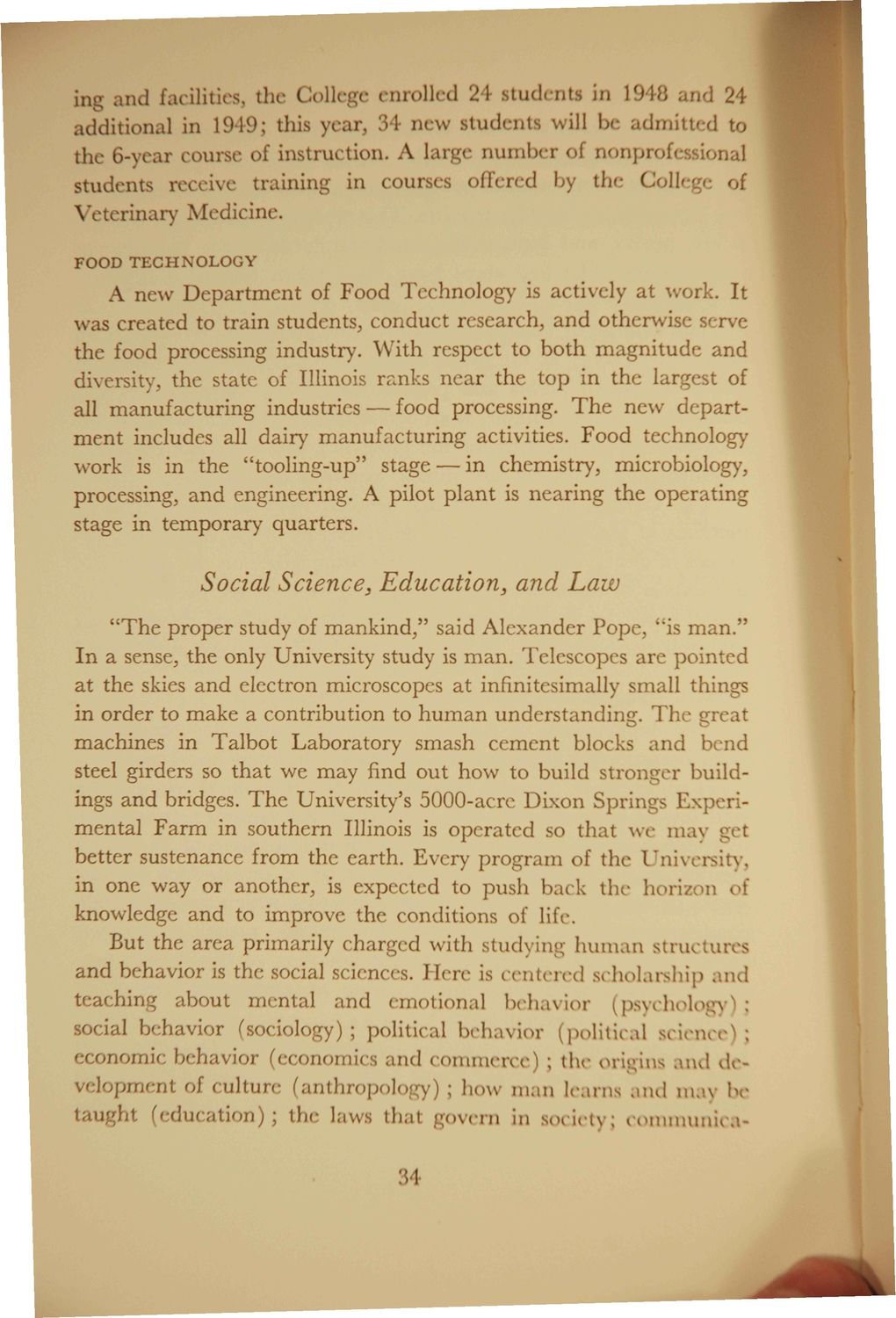Caption: Book - Four-Year Report of UI President (1950)
This is a reduced-resolution page image for fast online browsing.

EXTRACTED TEXT FROM PAGE:
ing and facilities, the College enrolled 24 students in 194 and 24 additional in 1919; this year, 34 new students will be admitted to the 6-y< ir course of instruction. A large number of nonprofessional students receive training in courses offered by the College of Veterinary Medicine. FOOD TECHNOLOGY A new Department of Food Technology is actively at work. It was created to train students, conduct research, and otherwise serve the food processing industry. With respect to both magnitude and diversity, the state of Illinois ranks near the top in the largest of all manufacturing industries — food processing. The new department includes all dairy manufacturing activities. Food technology work is in the "tooling-up" stage — in chemistry, microbiology, processing, and engineering. A pilot plant is nearing the operating stage in temporary quarters. Social Science, Education, and Law "The proper study of mankind/ said Alexander Pope, "is man." In a sense, the only University study is man. Telescopes are pointed at the skies and electron microscopes at infinitcsimally small things in order to make a contribution to human understanding. The great machines in Talbot Laboratory smash cement blocks and 1 nd steel girders so that we may find out how to build stronger buildings and bridges. The University's 5000-acre Dixon Springs Experimental Farm in southern Illinois is operated so that Ave may get better sustenance from the earth. Every program of the University in one way or another, is expected to push back the horizon of knowledge and to improve the conditions of life. But the area primarily charged with studying human structures and behavior is the social sciences. Here is centered scholarship and teaching about mental and emotional behavior (psychology : social behavior (sociology); political behavior (political science); economic behavior (economics and commerce) ; the origins and de5 velopment of culture (anthropology); how man learns and may be taught (education); the laws i hat govern In s<n i<i\ commun a1
|